- The essential tones of a dominant are the Major 3 and flat 7 -- C# and G for an A7. Those are the only tones an accompanist really 'needs' to play to express the V chord. Also, these are the strongest notes to target in a dominant phrase to explicitly state the V chord in the harmony.
- A 'functioning' dominant is one that is going to its I or i chord. A non-functioning dominant would be like the Bb7 in a Bb blues, because is not the V of any chord (until it goes to the IV chord). Another example is a II7 that eventually changes to a ii-7 before moving to the V and back to the I.
- The dominant in a ii-V is a functioning dominant. In fast tune, you are likely to just think of the V chord instead of the ii and then the V for the cadence, especially since the ii and V are diatonic. If you target the b7 and the root of the V early in your ii-V line, you have already expressed the 'ii' via 'essential tones' (essential tones are 3rds and 7ths).
- Any functioning Dom.7 chord can be altered with almost any type of 'extension.' The only taboo note is the Major 7 -- you wouldn't want to play an Ab in an A7 unless it was a chromatic movement (see 'bebop' scale). Traditionally, the 11 is somewhat 'weak' also. Adding a b9, 9, #9, b5, #5, 13 are all cool to add in your A7, however if you have one player thinking A9 and one player thinking A7b9, you might get some bad 'rub' if they aren't listening to each other. The ‘outside’ notes can help ‘lead’ the listener chromatically back to the I, which where a functioning dominant goes.
- While A Mixolydian is the 'diatonic' way to play over our A7, you can also play a BbminMaj7 scale, or a DminMaj7 scale. These are referred to as the 'altered' scale, they are just different modes of the Harmonic or Melodic Minor when you start on the A. They bring out various altered tones as listed in guideline #4.
- You can also play a Bbdim arpeggio/chord or any inversion of it (Gdim, C#/Dbdim, Edim). This is like an A7b9 substitution.
- You can substitute the tritone Dominant of a functioning V instead of the V7. Instead of A7, you can substitute Eb7. A tritone sub voicing is also a V7#11 voicing.
- You can substitute the dominant rooted at any note of the V's tritone diminished arpeggio on a functioning V chord. The tritone sub in D is Eb7 (Eb is the tritone of the V, which is A). The Ebdim arpeggio is Eb, A, C, Gb. For the A7 five chord, you can sub Eb7, C7, Gb7. As stated in guideline #7, Eb is a A7#11 voicing. The C7 is A7(b9,#9). The Gb7 is A7(b9,13).
- Because of #6 and #8, you can play the A Half-Whole diminished scale for a A7 (A, A#, C, C#, D#, E, F#, G). If it is easier, you can think of this scale as E Whole-Half scale (E being the ii chord).
- Pretty much any diatonic chord can be re-harmonized as a dominant. The vi chord can be played as a VI7 (A Train). The ii chord can be played as a II7 (There is No Greater Love). The iii chord can be played as III7 (All of Me). I can't think of a vii chord going dominant, but the bVII7 dominant is the 'back-door' dominant that can resolve to the I (G-7 / C7 / Dmaj7). Remember C7 is one of the 4 dominants out of the tritone diminished in guideline #8.
- You can play the whole tone scale on Dom7#11 or Dom7#5 chords (A whole-tone on A7). It can sound pretty 'out' if the rest of the band isn't hip and seems to work better in some scenarios.
- The melodic minor has 2 diatonic dominants. The MM IV is Dom7#11, the MM V is Dom7(b13). For playing Bb melodic minor over A7, you can try Eb7#11 or F7b13. If you were thinking E Harmonic minor, you could try A7#11 or B7b13.
- The Barry Harris 'Six to Diminished' concept re-harmonizes the diatonic chords to either be a 'Sixth' chord or Dom7b9. The 'V' chords are played using ‘diminished’ voicings with the V's b9 as in guideline #6. The diminished voicing of the V always leads to the neighboring inversion of the I6 voicing. There is an extra chord inserted to account for the #5 of the 'Barry Harris' scale explained later. For D major, the chords are all the B-6 inversions (which serve as the I, III, V, VI chords), plus all the C#dim inversions (which serve as the II, IV, bVI and VII chords). So in D Major: I = D6, II = Edim (A7b9), III = F#-6 or F#maj6 (don't voice 3rd – and inverted I6), IV = Gdim (A7b9), V= A9/11/13 (inverted I6), bVI = A#dim or Bbdim (A7b9), VI = B-7 (inverted I6), VII = C#dim (A7b9). This creates a chord scale that is constantly descending from V (A7b9) to I (inversion of D6). It diatonically relates to the 3rd mode of the Harmonic Minor Scale (minus the 5). So, the 'Barry Harris' Maj#5 scale is the VI as Harmonic Minor. For D, the Maj#5 Barry Harris scale is essentially B Harmonic Minor (plus the A note). This scale has all the B-6 and C#dim inversions listed above.
|
I’ve listed some guidelines to dominant chords that beginners and musicians coming from other types of music often need to have explained to them, from the mild to the spicy. They are not ‘rules’ but ‘guidelines’ that will help open up an understanding of what jazz players have been doing with dominants for well over half a century. For the sake of argument, we'll talk about the key of D (two sharps), in which A7 is the V chord.
0 Comments
The world of harmony as explained by a Barry Harris creation story... First there was nothing. From nothing, God created the chromatic scale -- the world for all music to inhabit. The world of the living is 12 notes: World = Chromatic Scale C, C#, D, D#, E, F, G, G#, A, A#, B The world is divided in half, creating Man and Woman. Each of them takes 6 tones of the world. Man: C, D, E, G, A Woman: C#, D#, E, G, A, B There are three babies from these parents -- all diminished. Each diminished receives 2 tones from man and and 2 tones from woman whole-tone scales. The formula for diminished is 1, b3, #11, bb7(6). The b3 and bb7 are 'chromosomes' from the opposite parent. All diminished scales are inversions of one of these three sets of notes. C, Eb, Gb, A C#, E, G, Bb D, F, Ab, Cb The 'Man' and 'Woman' Parents (whole-tones) are the first major scales. They have Major 3. Children (diminished) are the first minor scales. They have Minor 3. So far we know there is 1 chromatic scale. There are 2 whole tones scales. There are 3 diminished scales. Those 3 diminished babies (birthed by the two diminished scales) will now have babies. The first baby is the dominant. You get this baby by altering one "chromosome" aka, lowering one tone a half-step. Dominants (1,3,5,b7) - are diminished with one tone moved down a half-step. Each diminished can have four baby dominants. Example, Cdim can have B7, D7, F7, Ab7 babies. C, Eb, Gb, A becomes B [C down half-step], D#(Eb), F#(Gb), A = B7 C, Eb, Gb, A becomes D, Gb, A, C = D7 C, Eb, Gb, A becomes F, A, C, D#(Eb) = F7 C, Eb, Gb, A becomes Ab, C, Eb, Gb = Ab7 The diminished 'scale' is created putting two of the three diminished arpeggios together -- all the chromosomes of a diminished, and all the tonics of the baby dominants. Following the Root world of C, that would be: C, D, Eb, F, Gb, Ab, A, B This is known as the 'Whole-Half' Diminished scale which starts with a whole-tone jump followed by a half-tone jump. This gives us a Major 9 and a Minor 3. All the diminished children (birthed by the two Whole-Tone scales) have babies. The first baby is the Dominant. You get this baby by altering one "chromosome" aka, lowering one tone a half-step. Dominants (1,3,5,b7) - are diminished with one tone moved down a half-step. Each diminished can have four baby dominants. Example, Cdim can have B7, D7, F7, Ab7 babies. C, Eb, Gb, A becomes B [C down half-step], D#(Eb), F#(Gb), A = B7 C, Eb, Gb, A becomes D, Gb, A, C = D7 C, Eb, Gb, A becomes F, A, C, D#(Eb) = F7 C, Eb, Gb, A becomes Ab, C, Eb, Gb = Ab7 If you raise a tone of a diminished a half-step and the baby you get is a Min6 (1, b3, 5, 6) C, Eb, Gb, A becomes Gb, A, Db[C up half-step], Eb = Gbmin6 (Eb-7b5) The Half-Diminished and Minor 6 arpeggios are inversions of each other. Raise two tones of a diminished a half-step and the baby you get is a Maj6 (1, 3, 5, 6) C, Eb, Gb, A becomes A, C#[C up half-step], E[Eb up half-step], F#(Gb) = A6 (F#min7) The Major 6 and Minor 7 arpeggios are inversions of each other. Lower two different tones of a diminished a half-step and the baby you get is also a Maj 6 (1, 3, 5, 6) C, Eb, Gb, A becomes D[Eb down half-step], F#(Gb), A, B[C down half-step] = D6 (Bmin7) From the Chromatic split you get the Whole-Tone. From the Whole Tone's intermingling, you get the three diminished. By moving one or two tones up or down from the diminished arpeggios, you get all the Major 6, Minor 7, Half-Diminished, and Dominant arpeggios. From each diminished: lower one tone a half-step = dominant raise one tone a half-step = min6 (min7b5 inversion) raise two different tones a half-step = Maj6 (min7 inversion) lower two different tones a half-step = Maj6 (min7 inversion)
Here is a great guide for beginners regarding jazz harmony:
The Ultimate No Nonsense Guide to Jazz Harmony The contents are pretty much what's labeled on the tin -- straightforward explanations of concepts like:
Here's a million dollar lesson for free from Bruce Forman on his Guitarwank podcast (episode '99R' April 4th, 2018 ~71:28).
This is a great exercise for people coming from a blues background trying to get a little jazz color in their playing. The exercise helps get the altered sounds into your ear, even though it is a little bit of a 'fudge.' Most importantly, it is focused on motif development rather than focusing on learning the shapes to play over each chord. Instead of trying to re-visualize your fretboard's landscape over every chord, this exercise focuses on making phrases that resolve, i.e. 'making music.' It is not uncommon for blues players to move their 9th voicing (for example) up a half-step to reference the IV chord. That half-step sound is what a beginner should be looking for when they are trying to 'jazz' up their playing. If you play all the notes in this half step movement, you will feel how these notes compel you (lead you) to resolve back into the key. This is how jazz players think. The jazzbo is constantly introducing tension -- stretching a rubber band -- and then resolving, letting the rubber band come back to it's natural shape. The ii-V-I is the progression to learn for jazz. In G the progression is A minor, D7, G major. If you line up all the notes in these chords, they are all in Gmaj. It's a 'diatonic' progression -- all the chords' notes are in the same key. However, true jazz players do a lot of stuff to build up their tension playing 'outside' Gmaj. I reality, it is more hip to play A minor, Ab7, Gmajor -- the tritone substitution. But let's simplify our ability to play this way without thinking to much. The Exercise: 1) Play a simple phrase over the ii chord -- which is pretty much just a Dorian A minor -- the classic blues scale works. 2) Now repeat this phrase down a half-step. 3) Finally, resovle the phrase by ear. Step one is the ii chord, step two is the five chord, step three is the one. The brilliance of this exercise is it forces you to make music more than learning scales and substitutions and theory. Practicing this helps you develop motifs, gets the altered sound in your ears, and helps you intuit where the leading tones resolve to G major. There is a theoretical fudge to this exercise in that you are playing a minor on the five instead of a dominant. But don't get your hackles up over this as a beginner. Duke Ellington said, "If it sounds good, it is good." So try to make it sound good. One of the gems of this exercise is you are forced to listen to yourself in the context of the progression. You are listening to what you are playing because you have to repeat your own phrase. You are not 'coloring by numbers,' but getting involved with what you are creating. Bonus Exercise: 1) Play a simple phrase over the ii chord (again just a blues pentatonic or dorian phrase in Aminor will work). 2) Repeat the phrase a minor third up (that's three frets or semi-tones). 3) Resolve to G major by ear. To recap -- you are playing something melodic, committing it to memory and repeating it three frets up, then finding a note to answer in the G major scale. Here you are essentially playing the iv minor (C-) in step two. Some people call iv- the 'important' chord. The iv minor always wants to resolve to the one. Now you have a whole harmonic substitution added to your vocabulary. Try substituting the iv- in place of your five while comping. Double Bonus Exercise: Now let's actually play a REAL tritone substitution to get the most tension-resolution out of our line -- let's really stretch the rubber-band. Traditionally we say the tritone is Amin, Ab7, Gmaj. But what is Ab7 -- just Ebmin with a differnt root! The tritone is actually 2 minor thirds up from the one chord. 1) Play a minor phrase over the ii chord. 2) Repeat the phrase 2 minor thirds up (Eb for resolving to Gmaj). 3) Resolve to the root major by ear. With these three exercises, you've just increased your ii-V-I vocabulary about 400%! In the Guitarwank podcast, Bruce refers to a youtube video where Josh Smith attempts to explain the same material that Bruce taught him. I believe that video is here. Even if you are a seasoned jazzbo -- try these exercises out. You'll be glad you did. Through the wonders of youtube and other social media offering ideas of what I might be interested in, I have started to investigate the teaching of Barry Harris. Up to now, I would say my understanding of Jazz is derived mostly from the Berklee method which I found very logical and easy to get up and running playing jazz. They have done a good job at codifying a lot, but some would argue the strategies might be revisionist.
Barry Harris, a pianist in the mix at the birth of bebop, is one such cat who has been trying to educate how the music really originated and functions. I've seen a lot of scattered information and videos of Barry Harris teaching over the past few days, but this fellow's blog post seems like as good an introduction as any into the world of Barry Harris for guitar -- enough to give a taste of whether it is a alternative from the Berklee method you'll want to investigate. It has a short example PDF with chord boxes and links to more in depth educational materials. I also ran across this introduction which gets more in depth into the 'origin story' of scales an chords according to Barry Harris with some staff examples. Additionally, I've found this chap on You Tube who's videos can stretch your thinking outside of the Berklee method into Barrytown. Here is his mile-a-minute demo on harmonic theory which touches on some Barry Harris ideas. Worth subscribing to, Christian Miller offers the 'Altered Scale' might be a bit of a revisionist device to approximate the approaches the original bopheads probably used. His videos move quickly and you'll need some pre-requisite knowledge, but offer some tasty lick examples, especially in this quick-fast lesson on Bop Harmony. |
HI!I'm teaching myself jazz guitar... these are my notes. Archives
February 2020
Categories
All
|
||||||
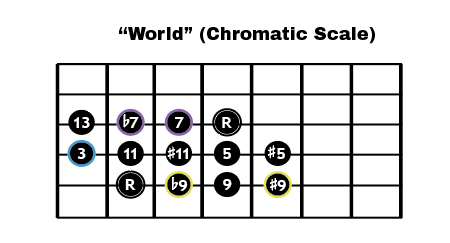

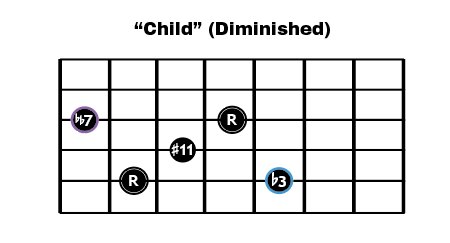
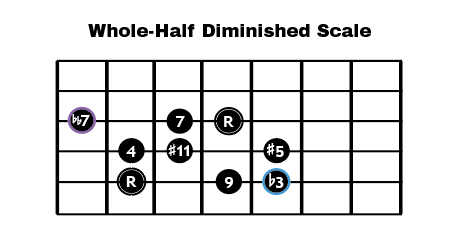
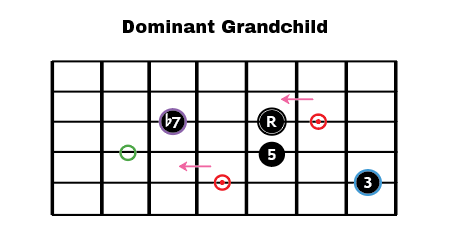
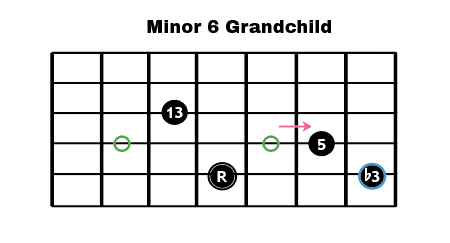
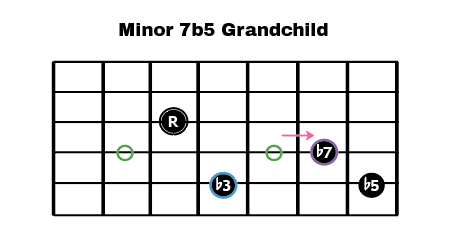
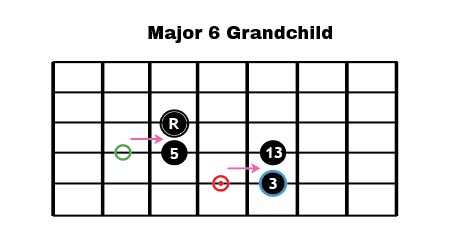
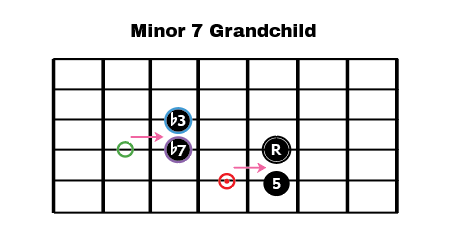
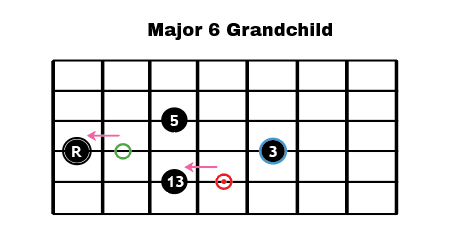
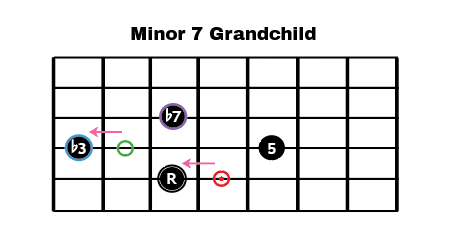
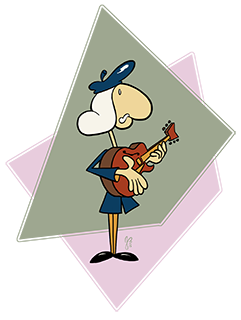
 RSS Feed
RSS Feed
